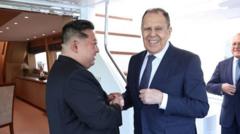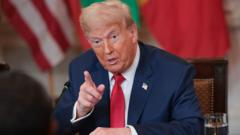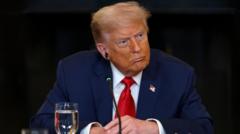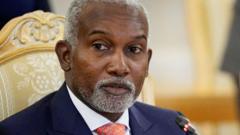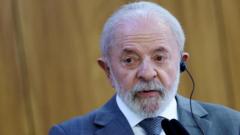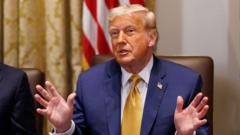The trade negotiations between Canada and the United States have taken a challenging turn as President Trump threatens a 35% tariff on Canadian products. Prime Minister Mark Carney, who campaigned on an assertive approach, is now scrutinized for his concessions in dealings with the U.S., notably the recent abandonment of a planned Digital Services Tax. Observers speculate on Carney's strategy, balancing domestic expectations with international trade realities.
Canadian Prime Minister Faces Pressure as Trump’s Tariff Threat Looms
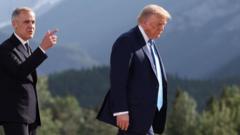
Canadian Prime Minister Faces Pressure as Trump’s Tariff Threat Looms
As tensions rise over a proposed 35% tariff on Canadian goods, Prime Minister Mark Carney's commitment to a fair trade deal with the U.S. is questioned.
Canada's trade relationship with the U.S. faces new challenges with President Donald Trump’s unexpected threat of a 35% tariff on Canadian imports set to take effect next month. This latest development comes amidst ongoing negotiations aimed at reaching a trade agreement, raising concerns about Prime Minister Mark Carney's effectiveness in representing Canadian interests.
Carney, who won the April election promising a tough negotiation stance, is now under scrutiny as his government appears to have made concessions that critics feel may not have yielded hopeful results. Earlier this year, the Canadian government retracted plans for a Digital Services Tax (DST), following Trump’s warning that negotiations would stall if the tax plan proceeded. This led to accusations that Canada was capitulating to American demands, stirring debates from political commentators about Carney's negotiation strategy.
Robyn Urback, a Canadian journalist, suggested that Carney’s approach could be likened to a “chicken dance,” where initial assertiveness quickly leads to retreat. Contrarily, political analyst Blayne Haggart criticized the coherence of Carney's policy towards the U.S., describing the compromise over the DST as being detrimental. Nevertheless, polls indicate that Carney's government continues to enjoy substantial support from Canadians.
Experts differ on the implications of these concessions, with Roland Paris, a former adviser on Canada-U.S. relations, asserting that the final agreement will be key in determining whether concessions were made too prematurely. He warned that if Carney is left with an unfavorable outcome from the negotiations, he might face political repercussions domestically.
This uncertainty looms larger as Canada previously made financial commitments to U.S. border security and appointed a “fentanyl czar” in response to Trump’s drug-related concerns. Trump's recent tariff warnings put pressure on Carney, who affirmed Canada’s commitment to negotiate in defense of its workers and businesses.
Despite the economic imbalance favoring the U.S., the impact of tariffs would ultimately fall on American consumers, with Canadian exports like steel and aluminum facing their own high tariffs. The Canadian government maintains a united front against Trump’s tariff threats, with various political leaders expressing the necessity of protecting national interests.
In a bid to diversify trade options, Carney is also introducing measures aimed at reducing reliance on the U.S. marketplace, including new agreements with the European Union. Minister Melanie Joly emphasized the unpredictable nature of the current U.S. administration, reiterating that Canada’s interactions are strategic and calculated, even amidst calls for a more resilient response to Trump’s negotiations.

